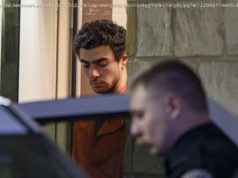“ Making a Murderer ” is back. Season 1 of the riveting true-crime series, which premiered on Netflix in December 2015, documented the arrests,…
“ Making a Murderer ” is back.
Season 1 of the riveting true-crime series, which premiered on Netflix in December 2015, documented the arrests, trials and convictions of Steven Avery and his nephew, Brendan Dassey, in the 2005 murder of photographer Teresa Halbach in rural Manitowoc County, Wisc. Halbach’s murder occurred two years after Avery was released from prison after serving 18 years for a rape he didn’t commit (he was exonerated through DNA testing).
Season 2, premiering Friday, encompasses Avery and Dassey’s “post-conviction” phase — their efforts to get their sentences overturned.
(Avery, now 56, is serving life without the possibility of parole and claims he was framed by local law enforcement; Dassey, who turns 29 on Friday, is eligible for parole in 2048. He’s intellectually challenged and claims his confession was coerced.)
Season 2 finds Avery with a new lawyer, Kathleen Zellner, who specializes in exonerating the wrongfully convicted; Dassey’s case is handled by Steve Drizin and Laura Nirider (she’s co-director of the Center on Wrongful Convictions of Youth in Chicago).
“Making a Murderer” filmmakers Laura Ricciardi and Moira Demos spoke to The Post about Season 2.
There’s more of Teresa Halbach’s personal story in Season 2 than there was in Season 1. Was that a conscious decision? Ricciardi: We asked the Halbachs to participate in Seasons 1 and 2 and they declined both times. We totally understand and respect that. What it came down to [in Season 2] was a college friend of Teresa’s who agreed to sit down with us. This was a new way we could try to show more about Teresa herself and things people were celebrating about her life. He not only gave us a great interview but shared archival material and took us back to Teresa’s college days. Our hearts go out to the Halbachs, of course; no one should ever have to go through what they’ve gone through. In this type of case there are no winners — everyone is struggling and suffering in their own way. We understand that and acknowledge that.
Did you always plan on a second season? Demos: When we finished Part 1 we did not know for sure we would do a Part 2. We did know that the center of the story is Steven Avery who, if nothing else, is a fighter … so at some level we knew his story wasn’t over. A couple of months after Part 1 [premiered] we started thinking about what it would look like to do a Part 2. Was there going to be something to film? One thing we knew about the post-conviction world is that things can take years, sitting and waiting for rulings to come from court. That’s not particularly cinematic. When we learned that Kathleen Zellner took Steven’s case in January 2016 … we reached out and introduced ourselves [to Zellner] and started asking whether she’d be willing to give us access to her process. That’s what we were interested in: documenting a process.
What’s the takeaway of Season 2? Ricciardi: In Part 2 what we set out to document was Steven and Brendan’s journeys of trying to free themselves and clear their names, this time not as the accused but as individuals convicted of various serious crimes and both serving life. We had no idea how active the defense teams would be. We had no idea how dynamic Brendan’s case would be. We certainly had no idea what the state would be doing in response to all of this. Demos: Where the case stands today is in the news, but what this season adds is the journey our characters take. Part 2 offers multiple layers far beyond whatever you’re going to read in the headlines. It takes viewers not only into the lesser-known parts of the justice system, the post-conviction phase, but what are the choices, the obstacles, the stakes?






